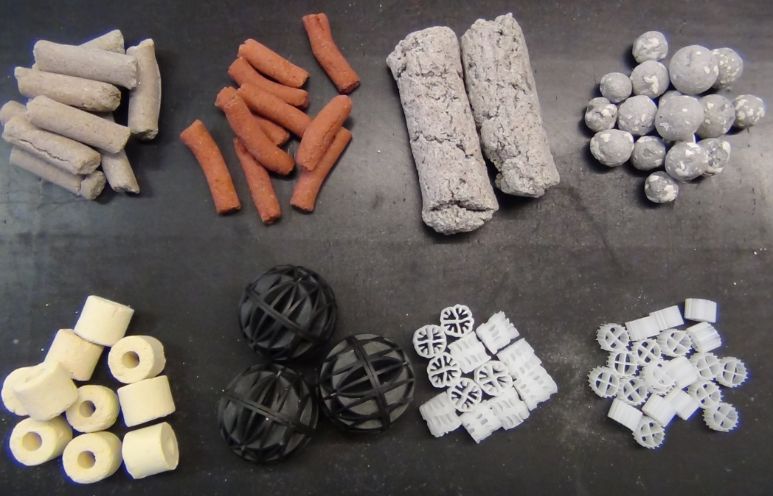
A Confession
The author would like to be able to say he knew what this testing revealed all along and has been using 100% foam, pot scrubbers or K1 in all his many canisters over the 56 years he has been keeping aquariums. That would be a lie. For some 45 years the author had used a combination of all the media that came with a canister, a ton of a huge variety of media which was on his garage shelving, and media he bought. Most of his canisters were filled with a pretty random combination of Matrix, ceramic rings, lava rocks and bioballs.
The author simply felt that the media in a filter wasn’t very important and they were all pretty much equal. The author was wrong, dead wrong. Whoops!

I think a comment by one of the readers of this website is apropos now:
“After reading through many of the various articles you confirmed what I suspected for many years regarding ceramic media. I always had a nagging suspicion that biofilm was found predominantly on the surface (not internal pores) of all this expensive media I have purchased. My suspicions were confirmed earlier this month when I foolishly replaced all of the outer foams on both my FX6 filters. The filters’ internal baskets were filled with “high quality” spherical sintered glass media which should have housed all of the beneficial bacteria but the tank had a tremendous bacterial bloom after that sponge replacement which made me think that the outer sponges were housing a significant portion of the bacteria. I stumbled across your page a few weeks later and was kicking myself.
I have since replaced both FX6 filters with two Eheim filters which combined hold 4 gallons of media. I owned Eheim filters in the past but it got rid of them because I fell for the “maximum tank turnover” provided by the large FX filters based on youtuber claims (mistake). I gradually swapped media and filled the two new Eheim filters with Kaldnes media in a static configuration and I’ve been monitoring parameters and the water quality is great (zero ammonia and zero nitrite). I opted for Kaldnes as a static media over 30ppi sponge to avoid early clogging in an African cichlid tank holding 25 fish between 2 and 3 inches long.”
To see what this commentator is talking about just read on.
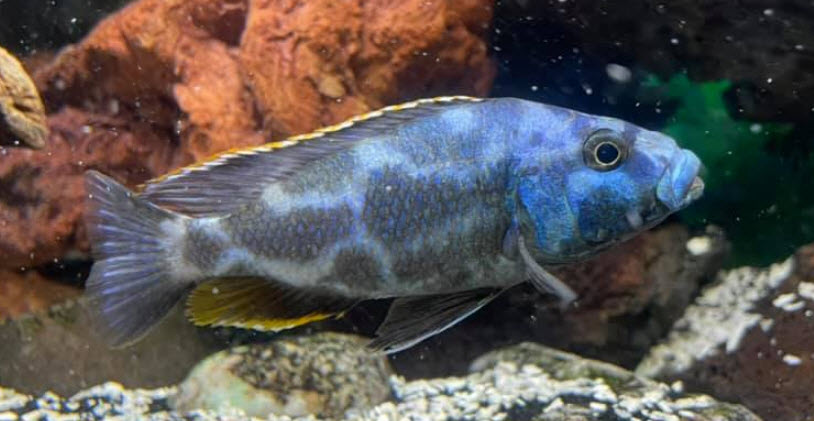
What is the “Best” Filter Media?
What has to be emphasized here is that most people key in on only ammonia and nitrite oxidation when looking at filter media. If a canister filled with lava rocks gives zero ammonia and zero nitrite than the lava “works fine”. Ammonia and nitrite oxidation requires very little from a filter media. So media like lava rocks “work fine”.
What is being missed is the concept of crystal clear water. That is water so clear that if you look down the length of a six foot aquarium you would think the fish are swimming in air. Crystal clear water requires twenty times more surface area that does ammonia oxidation, confirmed by controlled testing.
And the need for “crystal clear” water goes beyond aesthetics. Fish which are in crystal clear water will almost always be very healthy fish that don’t get diseases. This is because crystal clear water is very clean water. The cleaner the water the healthier the fish.
So the choice of which filter media to use just boils down to a personal choice depending on what one wants from their aquarium. An aquarium with no ammonia and unhealthy fish OR an aquarium with both no ammonia and crystal clear, healthy water. The choice is up to the hobbyist.

Abstract of a Filter Media Tests
A series of some six tests were run on the capacity of filter media.
- To test the ammonia oxidizing capability of various aquarium filter media 10 five gallon buckets were set up. The filter media was put in ten air operated corner filters. This test was replicated three times (thirty tests total) and replicated well. The testing data correlated well with the mathematically calculated effective surface area of each media. In turn the ammonia oxidation ability of the media by surface area correlated strongly with six research literature references on ammonia oxidation surface area.
- Clarity of the water was measured for eight weeks of cycling ten 40 gallon aquariums with different filter media in canister filters and a heavy load of food. Two full tests and one partial test were run. This was a total of 25 tests using canisters and aquariums. The second test used half the media that the first test used. The third test used twice the media of the first test. These tests largely confirmed that crystal clear water requires some twenty times the filter media effective surface area that ammonia oxidation requires. These tests with aquarium and canister filters also largely confirmed the first tests with buckets and corner filters with regard to the ranking of various media.
This was a total of 55 tests of media. All the tests correlated well with foam, pot scrubbers and K1 media significantly outperforming ceramic rings, Matrix and Biohome in ALL the tests.
These tests showed:
- A typical large canister filled with 30 ppi Poret foam (“sponge”), static K1 media or plastic pot scrubbers will give good ammonia oxidation with 700 five-inch mbuna and crystal clear, healthy water with 35 five-inch mbuna.
- A typical large canister filled with ceramic rings, lava rocks or BioHome filter media will give good ammonia oxidation with 80 five-inch mbuna and crystal clear, healthy water with 4 five-inch mbuna.
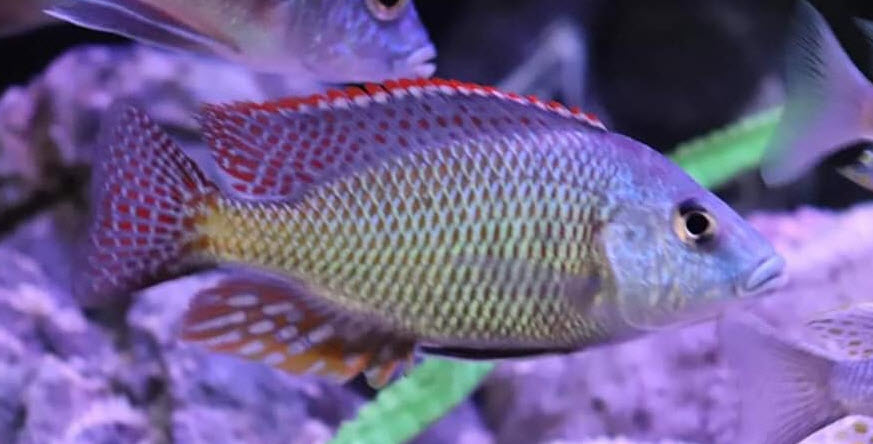
Media Ranking and Selection
One very important decision to make in the area of filtration is what media to use in the filter. In many ways this is more important than choosing a filter. The most important function of the media is ammonia oxidation.
A test of ammonia oxidizing capability of various filter media was run. The first number, the “efficiency” is the average ammonia oxidizing that 15 cubic inches of media accomplished over a 90-day period. The second number is the “effective” surface area in square feet per cubic feet calculated from that test. The third number is the effective surface area in square feet per cubic feet calculated by simple mathematics. The correlation between the test results and the calculated surface area is very significant and means the testing was accurate.

The only media which did not correlate well with the math was the pot scrubbers. Note that for the metric system simply multiply any of the square feet per cubic feet numbers by 3.3 to get square meters per cubic meters. For the metric system 100,000 f2/f3 thus equals 330,000 m2/m3 or 330 m2/l .
The higher the numbers here the better the media. This makes 30 ppi foam the best static media and ceramic rings the worst media for canisters. The complete test procedure used to come up with these numbers is outlined in the following link:
7.1.3. Filter Media Test

Because of reticulation and free volume considerations the surface area calculations are not very dependable. Extrapolating from the testing and giving aquarium gravel the most dependable surface area calculation, gives the following “effective surface area” by media. This is the surface area which should be used for calculating the required volume of filter media for a given weight of fish.
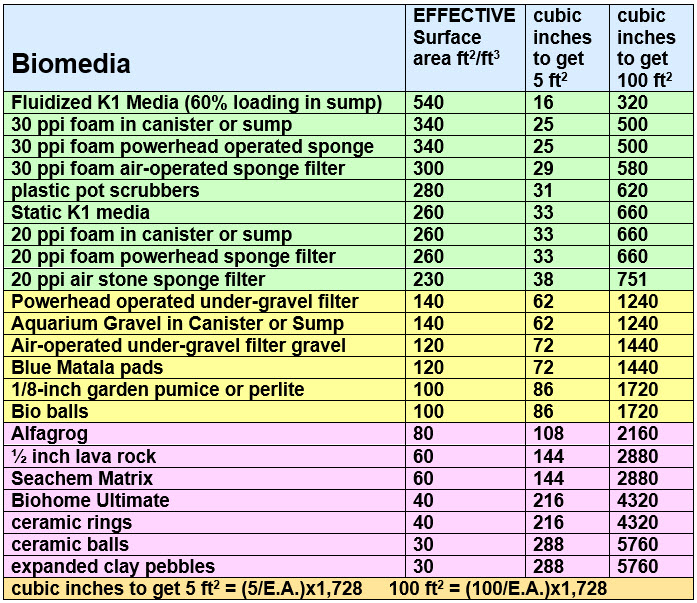
Note that for the metric system simply multiply any of the square feet per cubic feet numbers by 3.3 to get square meters per cubic meters. For the metric system 100 f2/f3 thus equals 330 m2/m3 or 0.330 m2/l .
Note that the fluidized K1 media is for the volume of the sump, not the volume of the media in the sump. I.e. 540 sq. ft of effective surface area per 1 cu. ft. of volume containing K1-media AND water (in the dedicated sump chamber, with 60% K1 loading. Another way to say this is: (540/0.6) = 900 sq. ft of effective surface area per 1 cu. ft. of “dry” K1-media, when the “dry” K1-media is put in a fluidized sump chamber with 60% K1 loading.
Note that a fluidized K1 bed with 60% loading of K1 has, on a cubic foot of filter volume, a little more than twice the biofiltration capability of static K1 media. This makes the cost per square feet of biofiltration of fluidized K1 to be only 30% of the cost of static K1. This makes fluidized bed K1 a VERY cheap media when purchased in bulk.

Mixing Media
Most hobbyists do an interesting thing. They mix their media. It is not uncommon to see eight types of media in a sump or six types of media in a canister. Since all biomedia do exactly the same thing, namely provide surface area for beneficial bacteria to grow, this is just rather humorous. But EVERYBODY does it, including the author prior to doing this testing!
Since the media with the greatest surface area is also the media which will plug up the fastest, this use of many types of media can be counter productive. For instance, if a hobbyist has some 30 ppi foam in a canister filter along with some Matrix, bioballs and ceramic rings. The 30 ppi foam clogs at four months. so the hobbyist takes apart the filter and cleans ALL the media. Cleaning the Matrix, bioballs and the ceramic rings is decidedly counter productive.
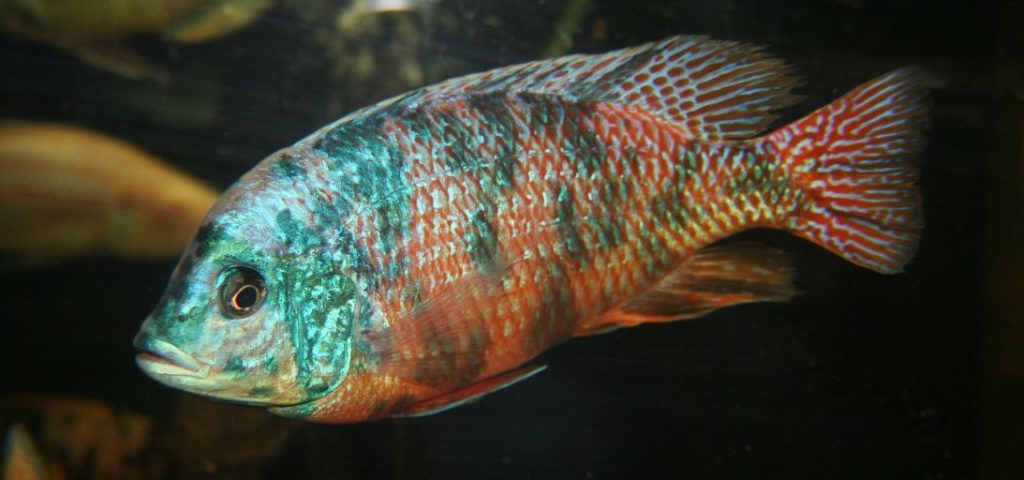
Marketing Hype about Filter Media
Filter media are very important in a fish tank. But there are a huge number of falsehoods about filter media spread by equipment manufacturers in order to make money. These falsehoods are spread around social media by well intentioned but mis-informed fishkeepers. These falsehoods include:
- Purigentm creates crystal clear water and removes ammonia, nitrite, nitrate and toxins from aquarium water.
- Matrixtm, BioHometm, sintered glass media, and porous ceramics (blocks, balls, rings, noodles, etc.) are the best biofiltration media with huge amounts of surface area on which bacteria can grow.
- Some ceramic media (De*Nitratetm and BioHometm) remove nitrates by anaerobic decomposition to nitrogen gas.
- Activated carbon, exchange resins, zeolites and chemical filtration media (i.e. Chemi-Puretm and Poly-Filtertm) are very useful in the freshwater aquarium.
- Filtration media (cartridges, bio-rings, foam) needs to be replaced every month or every six months or “when they get dirty”.
These claims are all just marketing hype easily debunked. But these claims do serve the purpose of making a lot of money for some creative aquarium supply manufacturers and distributors.
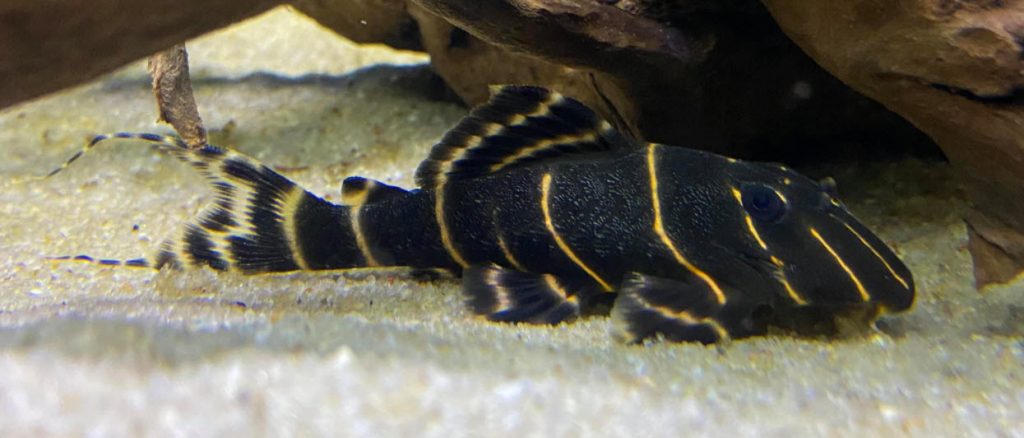
The links below are a complete review of all the filter media, discussions of each media in depth, the calculations needed to work out how much media one needs for various situations and discussions on media which just don’t work as advertised:
7.1. Review of Filter Media
7.2. Individual Filter Media
7.3. Calculating Required Media Volume
7.4. Chemical Filtration Media
7.5. “Denitrifying” Media
7.6. Aquarium Filter Media Surface Area Requirements
.
Return to Home Page and Main Menu
.
Aquarium Science Website
The chapters shown below or on the right side in maroon lead to close to 400 articles on all aspects of keeping a freshwater aquarium. These articles have NO links to profit making sites and are thus unbiased in their recommendations, unlike all the for-profit sites you will find with Google. Bookmark and browse!
.

Dave says
In reply to Cam …… Appearances can be very deceiving. Both by math calculations and by actual testing K1 is decidedly better than bioballs. And any type of plastic pot scrubbers will work equally well. Even the stainless steel pot scrubbers will work just fine.
Cam G. says
Hi Dave.
Having read all of this article and several of the sub-articles I am impressed and very thankful for the information. It has been most enlightening, to say the least.
I’m in the process (something of a beginner) of setting up a customized 30 gallon freshwater tank. Having a custom built internal filter box installed. Based on AIO (All in One) designs form manufactures like Waterbox Aquariums Canada (my home country) Lifegard Aquatics & Fluval Flex 32.5. FYI: the internal filter chamber 6″w – 3″d – 18″h +/-1.4 gallon
My big question is “effective” surface area. Looking at Bio Balls shown in article 7.2.7. Bio Balls
In my humble opinion balls appear to have much greater surface area than K1 ?
Would you kindly explain how/why the K1 is better than the bio ball for surface area, hence to grow the beneficial bacteria. Also, should I possible go down this road, any advice on what to look for in a pot scrubber (made of) and what to avoid.
My appreciation to all the information within your entire website.
Regards, Cam G.
CAM DUONG says
Dear Dave,
I would like to express my heartfelt thanks to you for the valuable articles you’ve shared. After learning from and applying the methods you suggested, I set up the filtration system for my aquarium using one canister filter filled with K1 media and one coarse filter container containing 80% micro K1. Over the past two years, I have maintained the system by occasionally draining the water from the coarse filter container, topping up the aquarium water, and cleaning the glass surfaces, while leaving the system otherwise untouched.
The results have been astonishing! My fish remain healthy, and the water in my aquarium is always crystal clear. I truly appreciate the knowledge and experience you’ve shared, which have helped me achieve such an incredible aquarium setup.
Thank you sincerely, CAM DUONG
Dave says
In reply to Ike …….. A, 60% wasn’t a tested parameter. One of the studies listed did test it and found 60% to be optimum B, Bakki filter media is worthless ceramic media, there is no need to test it. It it basically just a large form of ceramic ring.
Ike says
I have spent lots of $s in matrix and also did my share of mixed media (until now). I just came across your article in researching bio media, to enhance my filtration (after issues), and wanted to THANK YOU for sharing your thorough research.
I have couple of follow up questions, if you allow:
A. K1 at 60% – why 60%, did you also test it and found that to be the most effective “concentration “?
B. Bakki filter media, said to be “the best” by some koi pond guys, compared to other pumice and ceramics, sponges, bead filters etc (ofc without showing scientific tests). Have you come across it since writing this study? Any thoughts on it?
Thank you again for this analysis.
Dave says
In reply to Jayden ….. Seachem Phosguard or Fluval Clearmax are the two biggest names in the business. Both work well.
Jayden says
What brand or type or common name of phosphate remover? Thanks.
Myles says
Dave,
Would it be crazy to ask you a quick and dirty filtration question? Please forgive me if you’ve answered this one before!
1 gallon of K1 filter media = how many gallons of crystal clear water? (Accounting for the required 20x more surface area and assuming a 60% filter loading ratio,)
Dave says
In reply to Patrick ….. Higher ppi foam plugs up too quickly.
Kevin says
Hi Dave,
I’ve seen you’ve been getting quite a kicking on other sites for many of your articles on here. I just wanted to thank you for all of your hard work and your willingness to share your knowledge. I had reached out to you on Facebook but it seems you may no longer be active on there.
Patrick says
Hi Dave, I see you tested with 30 ppi foam. Would higher ppi foam theoretically offer even better results?
Dave says
In reply to Alan …. It is just good old assimilatory denitrification, where the nitrates are incorporated as proteins in the brown gunk on the foam.
Alan Bridges says
From your research I have converted all 3 x canister filters on my 130g tank to foam only (previously having some foam but mainly Ceramic media within). This has gone great and clearance of ammonia and nitrite has been fantastic. However, I have had one very unexpected side effect…………
This tank had previously been very steady and had run at around 20-30ppm nitrates. My maintenance schedule has not changed with 50% water change weekly. Fish load and feeding have been the same. However, since changing to all foam in the canisters the tank water is now running at a steady 5ppm nitrate. How is this possible ? Has anyone else experienced this?
Dave says
I haven’t run across any commercial sewage treatment facility which has switched from “standard” K1 to “Micro” K5 media so I very much doubt the data. For one thing the holes plug up a lot easier when they are small. I give all the floating polypropylene filter media designed for fluidized beds the same number, namely 540 square feet of surface area per cubic foot of fluidized bed.
Phil B. says
So much great information, thank you!
Wonder what you think about the claims of surface area on the K5 media?
Thanks,
Phil
Dave says
In reply to Nick ….. I’ve never personally tested it. But in theory the Poret@aqua fluidized bed should fail rather miserably.
Nick says
Sir, Wondering how you compare the Poret@aqua fluidized bed to the K1 fluidized bed?
Dave says
In reply to Scott ….. Yes Micro K1 has a greater surface area but it also plugs up faster. So I don’t recommend it.
Scott Mitchell says
Hi,
You mention K1 and how good it is but have you ever considered K1 Micro? It looks the same but it is much smaller. It seems being that it is smaller it would have a greater surface area in any given space than K1.
Anyway, what do you think?
Benedict says
Dave, thanks again for your insight here. I think we are arriving at in interesting question, which goes to the difference between the function of a Mattenfilter and an undergravel filter (if there is one).
In the German sources, uneven rates of flow through the foam mat are not considered important. The theory seems to be that the mat eventually self-equalises, in the sense that the areas with highest flow (usually closest to the pump inlet) accumulate biofilm and detritus first, causing water to take the path of lower resistance in the more distant areas of the mat. Since older detritus decomposes first (increasing flow), and because the mat is of the same thickness throughout, equalisation eventually occurs regardless of where the pump is placed.
If that’s correct, then the real question is whether uneven flow BEHIND the mat (or in this case, underneath it) is problematic. I’m not sure how to work that out. It does not seem uncommon to add additional media behind the mat, though usually bagged for easy retrieval (like carbon).
Dave says
In reply to Benedict … The cross section of the undergravel plates are deliberately designed to spread out the flow evenly across the media. Eliminate the plates and the flow will become very uneven, irregardless of the type of pump used.
Benedict says
Why? Would using leftover filter media to cover, say, 10-20 per cent of the base impede flow too much? And would the same problem arise if using a pump rather than airlifts?
Dave says
A mattenfilter substrate requires the plates of an undergravel filter in order to work well.
Benedict Moore says
Great website. I’ve been enjoying your heresies enormously, and am left wondering why the (long established) technology of biofilm filtration never made its way to aquaria. Perhaps it’s simply because we fixate on what we can measure at a hobbyist scale (nitrate) rather than what we can’t (BOD).
I have also got to thinking further about how to combine a Mattenfilter with an under-gravel filter.
For a large tank, the simplest solution seems to be a single layer of K1 Micro or other very “open” media, packed very loosely under the mat to keep it off the glass. The mat looks great (like black sand), and the aesthetics of the airlifts could perhaps be improved by using glass tubing (cheaply available from any online scientific or glassblowing supplier) with the airstone and line concealed by the mat.
A smaller tank could do away with the noise of airstones altogether, by installing a small watertight corner chamber to house a pump and heater (spaced 1cm off the tank bottom for water ingress, with the pump outlet at the top).
Some quick maths on the result: imagine a 100 gallon discus aquarium with a 50 gallon sump, running both a moving bed bioreactor (with fluidised K1 Micro) and a Mattenfilter substrate as described.
This setup has the same filtration surface area as FIFTY Fluval FX6s (each packed with K1 Micro).
Fifty sounds like a lot, until you realise that a Fluval FX6 only holds 5.9 litres of media (claimed), whereas the aquarium and sump in my example has about 575 litres of volume (assuming the aquarium is 90% full and the sump 70% full). You don’t need to dedicate very much of that volume to filtration before the canister becomes irrelevant.
In more detail, in case you wish to check the maths: my 50x figure assumes the K1 Micro fills 70% of the available water volume in the sump chamber, that the water level in the sump is at 70%, and that only half the sump is dedicated to the reactor (to leave space for a refugium and pump chamber). It also assumes the tank’s substrate is a 3cm layer of Poret foam at 20PPI, spaced off the bottom with a single layer of loosely packed K1 Micro (at 50% of possibly density). I’m also taking into account two sump baffles using the same foam (stiffened with egg crate) at 70% immersion.
Note that I’m relying on the manufacturer’s specifications (taking into account differences between “protected” and “total” surface area for the K1 Micro, for fluidised and static applications respectively). However, their accuracy doesn’t really matter: even if Seachem Matrix (for example) does what it claims, you’ve still got 10 times more space in the 1cm gap under the substrate mat than in the entire Fluval FX6 canister. Even scattering barely enough Matrix to keep the foam off the glass (say, at 20% density) still doubles your capacity over running the canister alone, EVEN if the Mattenfilter and sump does nothing at all.
I’ll concede that a sump is hard work for the average aquarist, but a Mattenfilter substrate certainly isn’t.
Dave says
In reply to big red eddy You are 100% correct. Sponge K1 or pot scrubbers plus sufficient water changes to keep levels of nitrate below 80 and you will do just fine.
BigRedEddy says
Hi Dave,
this research is excellent, so i thank you for taking that time.
My big take away is that BioHome and Matrix while both claim to complete the nitrogen cycle by removing nitrates through anaerobic bacteria, are more a marketing ploy than doing it? I have spent a lot of money on both over the past year.
Am i correct in saying that 30ppi sponge is much better for the fish, rather than trying to get anaerobic bacteria going? just load my canister filter (over time) with more sponge or pot scrubbers and do frequent water changes?
thanks in advance
Zsolt Papp says
One of the most respected breeders and Aquarists in my country, solely and exclusively uses potato bag meshes in his filters for more than 30 years now. He swear by it as the best media for large heavily stocked tanks. It is very similar in texture and material to the plastic pot scrubbers.
Brad says
Hi Dave,
I have created a little spreadsheet for automatically calculating fish stocking based on media, using the data on your website! (Getting too old for basic and manual math!)
Not sure if you have Microsft Excel, but would love for you to have a little look and let me know any feedback?
https://www.icloud.com/iclouddrive/0e8oAAnyx2wBpGBP-Jpj6TZkQ#Filter_Media_Fish_Stocking_Caluclator
Thanks,
Brad